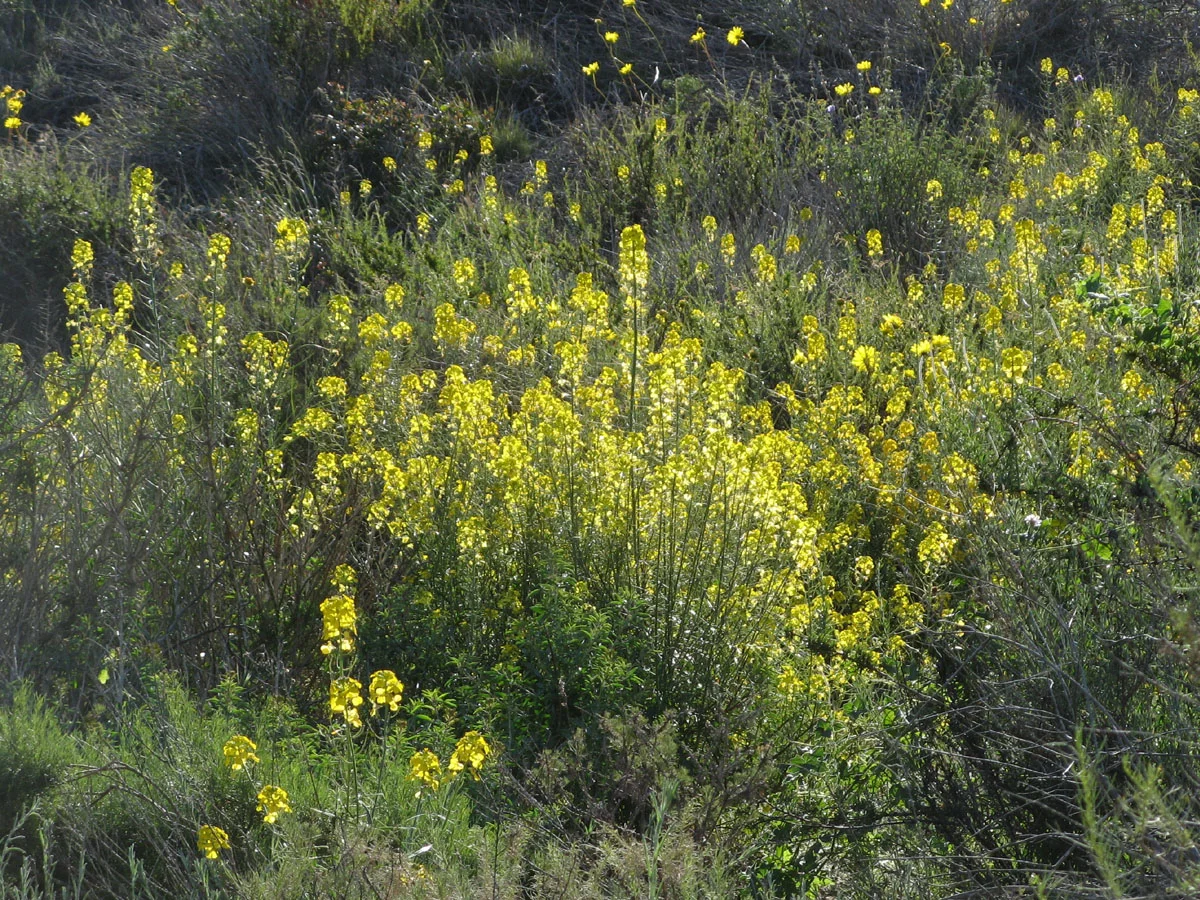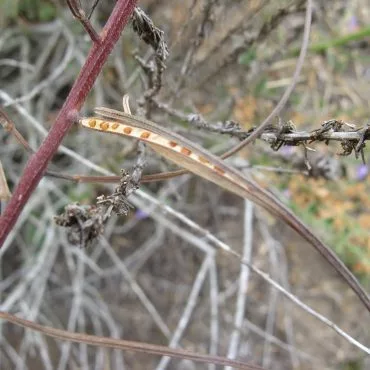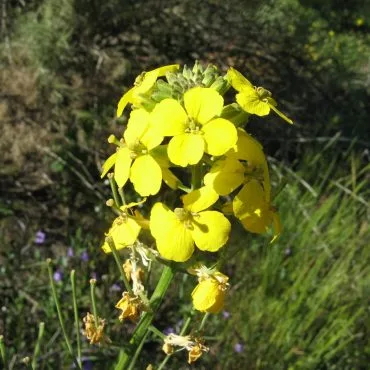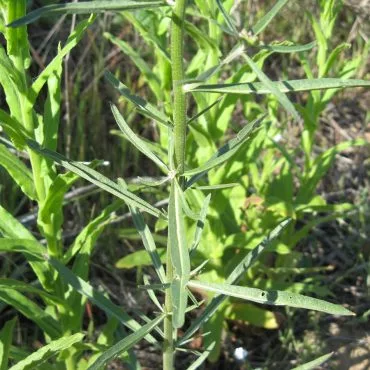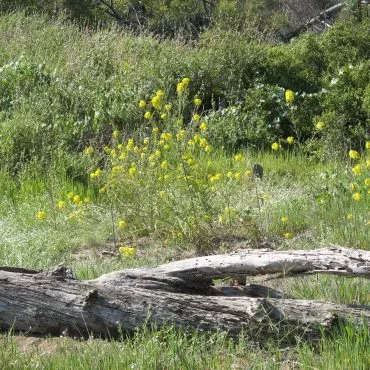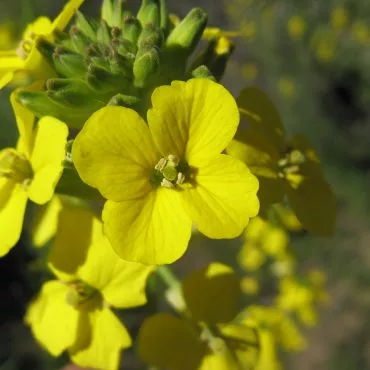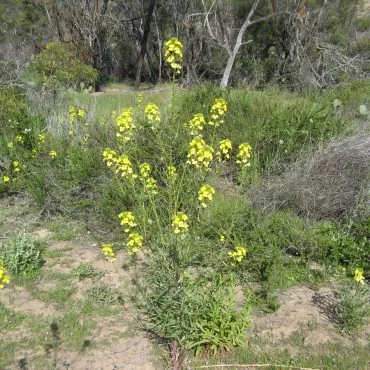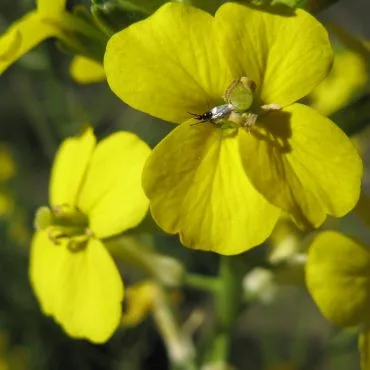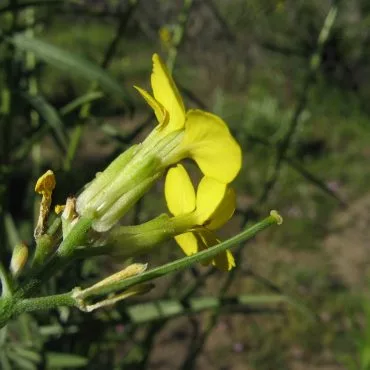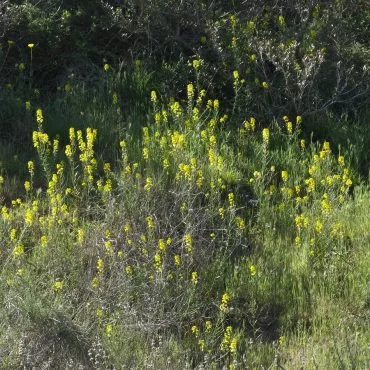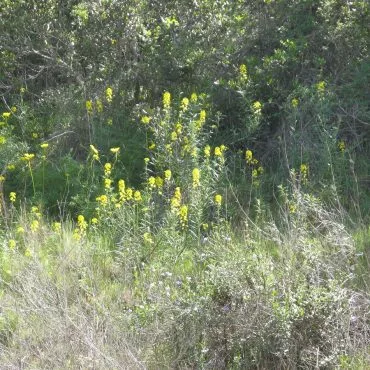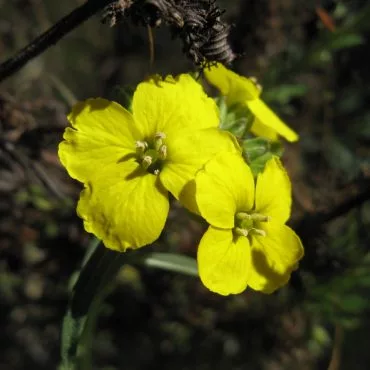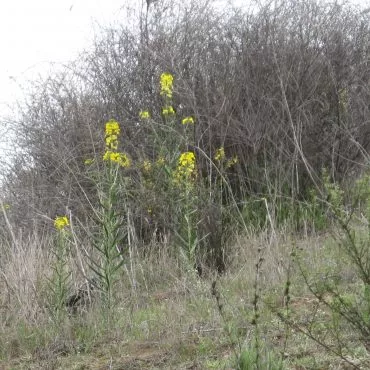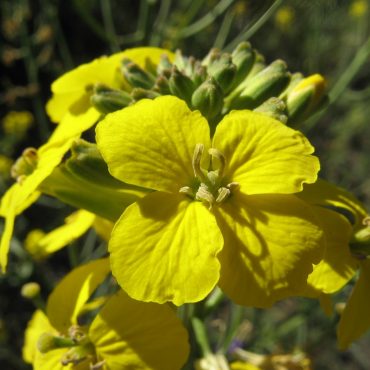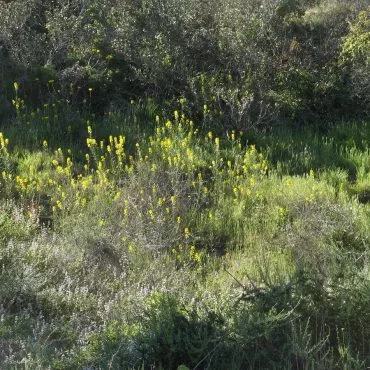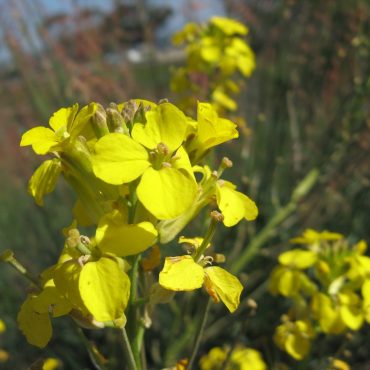Classification
2,11,44,143
Western wallflower is dicot angiosperm in the mustard family (Brassicaceae), a family of major economic importance that has very broad distribution. There are many well-known species and cultivars in the family including common vegetable crops such as cabbage, cauliflower, broccoli, turnips, watercress and radish, and ornamentals such as sweet alyssum and stock; there are also invasive weeds such as black mustard, wild radish, and sea rocket. Interestingly, six of our common vegetables–cabbage, cauliflower, kohlrabi, Brussels sprouts, broccoli, and kale–were all bred from a single species of mustard, Brassica oleracea.143
Members of the mustard family are characterized by four petals in a cross shape (from which came the former family name Cruciferae, or cross-bearing); and by six stamens, four long and two short. Mustard seedpods come in different shapes. When mature, they split open from both sides, exposing the seeds on a central membrane. Seedpods occur radially around the flower stalk, “like a spiral staircase for the little people.”143
Sixteen species in the mustard family have been reported from the Reserve.48 Eight of these are non-native weeds, including black mustard and field mustard (Brassica nigra and B. rapa), wild radish (Raphanus sativus), sea rocket (Cakile maritima) and stock (Matthiola incana). Others include lovely spring natives such as milkmaids (Cardamine californica).
There is uncertainty about the taxonomy of western wallflower. Some researchers would place E. capitatum and the closely related E. asperum into a single species.253 A number of subspecies and varieties of E. capitatum have been proposed. At present, CalFlora7 recognizes four in California, three of which have very restricted distributions. Jepson recognizes only two. According to the location, ours is likely to be variety capitata,48 which is the most widespread of the varieties and the only one reported from this area.
Jepson eFlora Taxon Page

